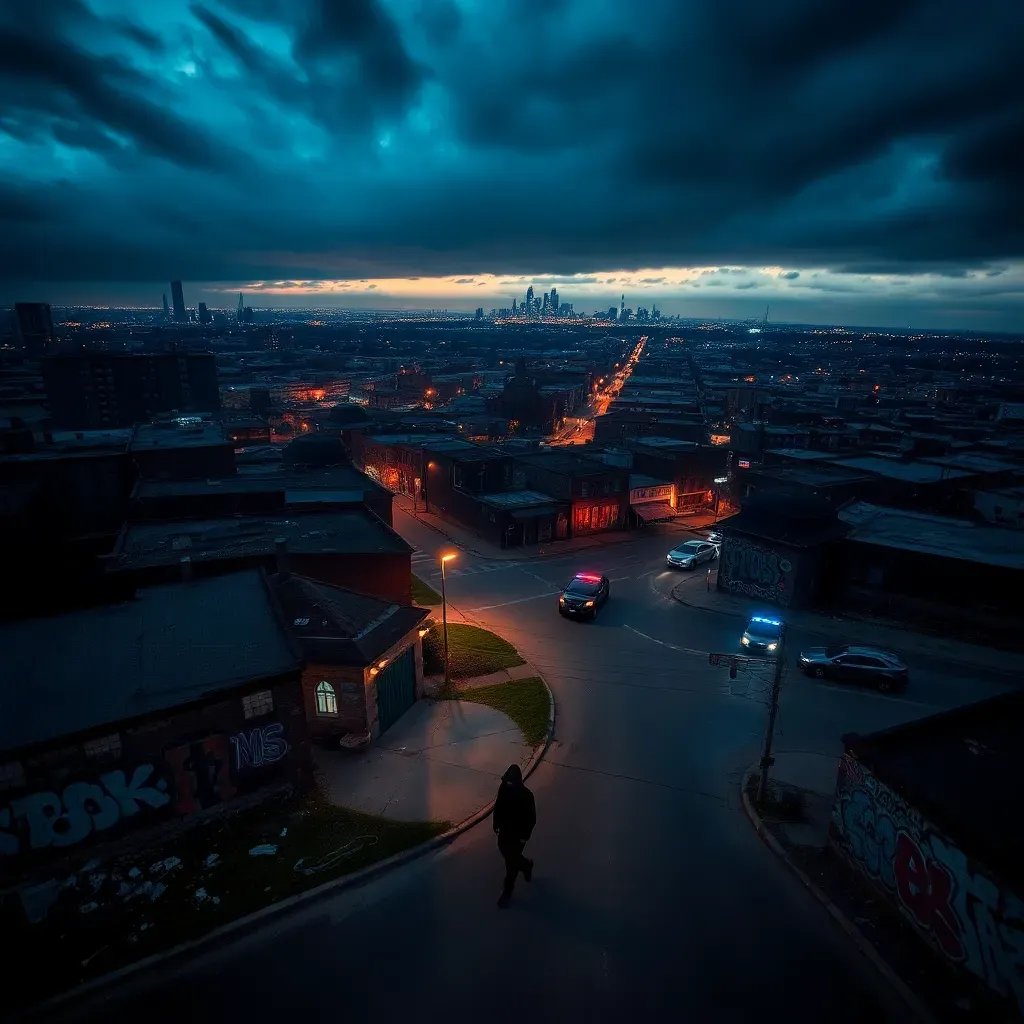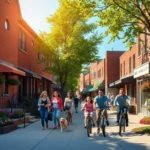Top violent cities in Michigan: shocking hotspots you won’t believe
- Setting the Scene on Michigan’s Crime Landscape
- How We Measure Violence: Breaking Down Crime Rates and What They Really Mean
- The Usual Suspects: Detroit and Flint’s Gritty Reality
- Surprise Hotspots: Muskegon Heights and Other Small But Hardcore Cities
- What’s Driving Violence in Michigan’s Most Dangerous Cities?
- How Residents Cope: Safety Tips and Community Efforts in High Violence Areas
- Comparing Michigan’s Dangerous Cities: A Detailed Crime and Safety Breakdown
- Myths vs. Reality: What People Get Wrong About Michigan’s Crime Hotspots
- Voices from the Streets: Opinions and Stories from Michigan’s Most Violent Cities
- Looking Ahead: What’s Being Done and What Needs to Change in Michigan’s High Violence Cities
- Key Takeaways on Michigan’s Top Violent Cities
- Sources and References
Setting the Scene on Michigan’s Crime Landscape
Crime in Michigan isn’t just a big city problem. Sure, places like Detroit and Flint often grab headlines, but some of the most violent places in Michigan are actually smaller towns you might never have heard of. It’s a mix of sketchy streets, rough neighborhoods, and dodgy areas that catch residents and visitors off guard. Understanding the top violent cities in Michigan matters whether you live here, plan to visit, or just want to keep up with safety trends in the US. This article aims to give you a clear, honest, and detailed look at these crime-ridden spots based on recent data and real voices from the streets.
How We Measure Violence: Breaking Down Crime Rates and What They Really Mean
When we talk about crime rates, it’s important to know what those numbers actually mean. Crime rates are usually calculated as the number of violent crimes per 100,000 residents. Violent crimes include serious offenses like murder, assault, robbery, and rape. This method helps compare cities fairly, regardless of their size.
Smaller towns like Muskegon Heights can sometimes rank higher than big cities because even a small number of incidents can push their rate up sharply due to their lower population. So, a town with just 10,000 people and 67 violent crimes per 1,000 residents looks worse on paper than a city with millions but more total crimes.
Here are some key terms to keep in mind:
- Violent crime: Crimes involving force or threat of force.
- Crime rate: Number of crimes per 100,000 people.
- Incidents and reports: Recorded events of crime.
- Arrests: Number of people taken into custody for crimes.
- Gang activity and shootings: Often linked to spikes in violence.
Data sources include FBI crime reports, WalletHub studies, and local police records. These provide a reliable and transparent look at crime trends across Michigan.
| City | Population | Violent Crime Rate (per 100,000) |
Murder Rate (per 100,000) |
Gang Activity Level |
|---|---|---|---|---|
| Detroit | 670,000 | 1,965 | 43 | High |
| Muskegon Heights | 10,000 | 6,700 | 30 | Moderate |
| Flint | 95,000 | 1,800 | 35 | High |
| Benton Harbor | 10,000 | 2,500 | 25 | Moderate |
The Usual Suspects: Detroit and Flint’s Gritty Reality
Detroit often comes up first when people think about dangerous cities in Michigan. It’s known for high rates of violent crime, including assaults, robberies, and shootings. The city struggles with gang presence and economic challenges like unemployment and poverty, which contribute to the crime picture.
For example, Detroit’s assault rate is among the highest in the nation, with frequent reports of shootings in certain neighborhoods. Residents often mention areas with poor lighting and limited police patrols after dark, making some streets feel unsafe.
Flint shares many of these challenges. The city has faced urban decay and economic hardship for years. Violent crime rates remain high, with residents reporting incidents of robbery and aggravated assault. However, Flint’s community leaders are actively working on programs to improve safety and rebuild trust between police and residents.
A local reporter once noted,
“Living here means being aware of your surroundings, especially at night. Some neighborhoods are gritty and rough, but there’s a strong community spirit fighting to change that.”
Surprise Hotspots: Muskegon Heights and Other Small But Hardcore Cities
You might be surprised to learn that the city with the highest violent crime rate in Michigan isn’t Detroit or Flint — it’s Muskegon Heights. This small city of just over 10,000 people saw a sharp rise in violent incidents between 2019 and 2021, with about 67 crimes per 1,000 residents. That’s a huge number for a town its size.
Other smaller cities like Albion, Highland Park, Harper Woods, and Benton Harbor also show high crime rates. These places often face similar issues: poverty, lack of jobs, gang activity, and stretched police resources. Residents describe some neighborhoods as sketchy or shady, especially after dark.
| City | Population | Violent Crime Rate (per 1,000 residents) |
Unemployment Rate (%) | Poverty Rate (%) |
|---|---|---|---|---|
| Muskegon Heights | 10,000 | 67 | 15 | 40 |
| Albion | 8,000 | 55 | 12 | 35 |
| Highland Park | 11,000 | 60 | 18 | 45 |
| Benton Harbor | 10,500 | 50 | 14 | 38 |
Locals on social media often mention streets with low lighting and isolated spots where incidents have occurred. One resident shared on a community forum,
“You gotta be careful walking around after dark. Some blocks feel hardcore and wild, but neighbors look out for each other.”
What’s Driving Violence in Michigan’s Most Dangerous Cities?
Several factors fuel the high crime rates in these crime-ridden cities. Economic hardship tops the list — unemployment and poverty create stress and desperation that can lead to violence. The drug trade and gang influence also play a big role, with some neighborhoods seeing frequent shootings and arrests tied to gang activity.
Urban decay adds to the problem. Areas with abandoned buildings, poor street lighting, and limited community resources often become hotspots for crime. Residents in these neighborhoods face daily challenges, from concerns about personal safety to declining property values.
Police presence varies. Some cities have fewer officers per capita, making it harder to maintain order and respond quickly. Community programs aimed at violence prevention exist but often struggle with funding and trust issues.
A criminologist explained,
“These unsafe cities in US reflect broader national trends where economic and social factors intersect with crime. Addressing root causes is key to long-term improvement.”
How Residents Cope: Safety Tips and Community Efforts in High Violence Areas
Living in or visiting rough Michigan cities means being smart about safety. Residents recommend:
- Sticking to well-lit streets and avoiding shady areas after dark.
- Joining or supporting neighborhood watch groups.
- Being aware of local crime reports and alerts.
- Using public spaces and community centers that offer safe activities.
Community initiatives are making a difference. Programs focused on youth engagement, job training, and neighborhood cleanups help reduce violence. Police departments are working to build trust through outreach and better communication.
One community activist shared,
“Change takes time, but when neighbors come together, even the gritty parts of town can become safer.”
Comparing Michigan’s Dangerous Cities: A Detailed Crime and Safety Breakdown
| City | Violent Crime Rate (per 100,000) |
Murder Rate (per 100,000) |
Gang Activity | Unemployment Rate (%) | Poverty Rate (%) | Police per 1,000 Residents | Recent Trend |
|---|---|---|---|---|---|---|---|
| Detroit | 1,965 | 43 | High | 12 | 35 | 2.5 | Improving |
| Muskegon Heights | 6,700 | 30 | Moderate | 15 | 40 | 1.8 | Rising |
| Flint | 1,800 | 35 | High | 11 | 33 | 2.0 | Stable |
| Benton Harbor | 2,500 | 25 | Moderate | 14 | 38 | 1.5 | Rising |
| Albion | 5,500 | 20 | Low | 12 | 35 | 1.7 | Stable |
This breakdown helps highlight where each city stands in terms of violence and safety resources.
Myths vs. Reality: What People Get Wrong About Michigan’s Crime Hotspots
There are plenty of myths about dangerous cities in Michigan. For example, many think Detroit is the only city with serious crime problems. But as we’ve seen, smaller towns like Muskegon Heights and Albion can be just as hardcore in terms of violence.
Another misconception is that small towns are always safe. The data and local voices tell a different story — some small cities face intense challenges that rival or exceed those of larger urban centers.
Media coverage often focuses on the most dramatic stories, which can skew public perception. It’s important to look beyond headlines and understand the complex realities behind these gritty neighborhoods.
Voices from the Streets: Opinions and Stories from Michigan’s Most Violent Cities
“I’ve lived in Detroit my whole life. Some blocks are wild, but neighbors watch out for each other. It’s not all bad, but you gotta be careful.” – Local resident, Detroit
“Muskegon Heights has seen a spike in crime, but community groups are stepping up to make a difference.” – Community activist
“Flint’s challenges are real, but there’s hope with new programs focusing on youth and safety.” – Local journalist

Looking Ahead: What’s Being Done and What Needs to Change in Michigan’s High Violence Cities
Efforts to reduce violence in Michigan’s crime-ridden cities include increased funding for police, community outreach programs, and economic development initiatives. However, challenges like systemic poverty, distrust of law enforcement, and limited resources remain.
Experts suggest focusing on:
- Expanding job opportunities and education.
- Building stronger community-police relationships.
- Investing in youth programs to prevent gang involvement.
- Improving urban infrastructure and lighting in unsafe neighborhoods.
Successful case studies from other US cities show that combining these strategies can lead to lasting improvements.
Key Takeaways on Michigan’s Top Violent Cities
To wrap up, the most violent places in Michigan aren’t always the big cities you expect. Muskegon Heights leads in violent crime rate, followed by Detroit, Flint, and several smaller towns facing similar challenges. Economic hardship, gang activity, and urban decay drive much of the violence, affecting residents’ daily lives and community well-being.
Understanding these complexities helps residents, visitors, and policymakers make informed decisions and support efforts to improve safety across Michigan.
Sources and References
What do you think about the safety situation in Michigan’s cities? Have you experienced or heard stories from any of these sketchy or rough neighborhoods? How would you like to see communities and authorities work together to improve safety? Share your thoughts, questions, or stories in the comments below!
 Is Detroit crime rate for expats worse than you think? Find out now
Is Detroit crime rate for expats worse than you think? Find out now Is Detroit safe neighborhoods? Shocking truths revealed
Is Detroit safe neighborhoods? Shocking truths revealed Top violent cities in Louisiana: crime hotspots you won’t believe
Top violent cities in Louisiana: crime hotspots you won’t believeSi quieres conocer otros artículos parecidos a Top violent cities in Michigan: shocking hotspots you won’t believe puedes visitar la categoría Michigan.

Leave a Reply